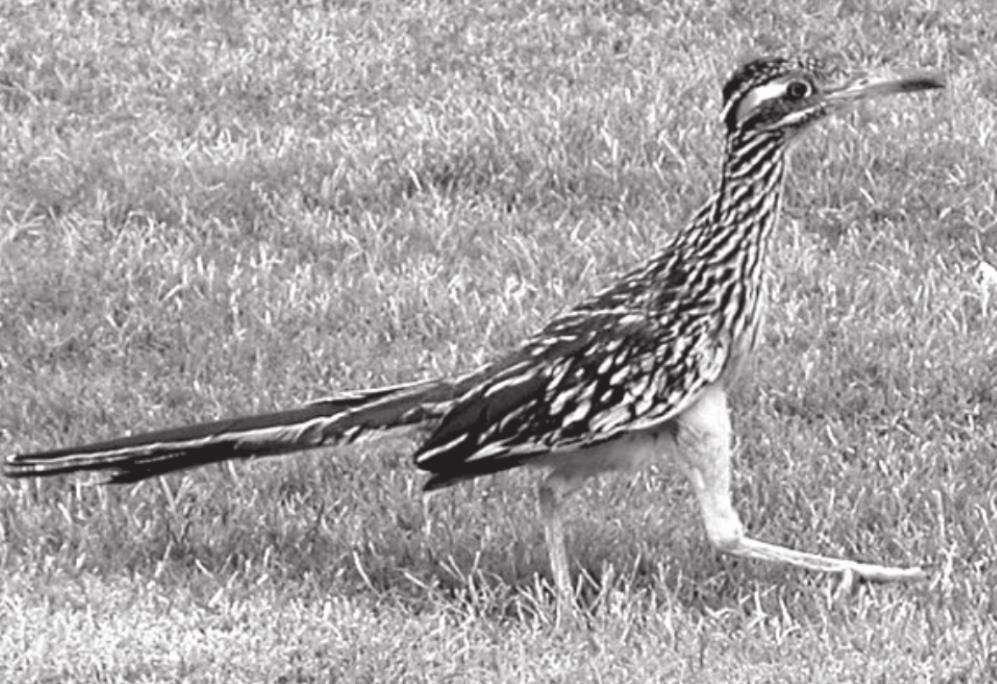

A Greater Roadrunner at the Visitor Center, Death Valley National Park, California. Photo by Mark Wilson WIKIMEDIA COMMONS
Exploring Nature: The Roadrunner
I don’t see as many roadrunners these days as I once did. Maybe this area is becoming too developed and urbanized.
And that would be a shame, because the greater roadrunner, Geococys californianus, is a handsome, noble bird. A member of the cuckoo family, it occurs throughout the Southwest, from Kansas to California and southward to central Mexico.
A slender, long-legged bird, it is capable of sprinting up to 15 miles per hour and flies only under duress. It eats darn near anything, including seeds and fruits, rodents, insects, spiders, scorpions and lizards.
It is also a famous snake killer. Some tales have the roadrunner building a fence of cactus pieces around a snake so it cannot escape, but I don’t think this is true.
However, the bird does have a quick agility that allows it to stab at a snake and grab it in its powerful beak and thrash it on the ground.
Roadrunners hide their stick nest in a cactus or in shrubby bushes or low trees and line it with grasses and leaves. The female lays three to six white eggs, which hatch into chicks in about 20 days. These chicks grow rapidly and after about 18 days they are able to catch their own food.
Why is this bird called the “greater” roadrunner? Because there is a similar species, the lesser roadrunner, that is found in portions of Mexico and Central America.
The roadrunner is also known as “paisano” and “chaparral cock.” By any name, it is a most congenial and interesting bird.











